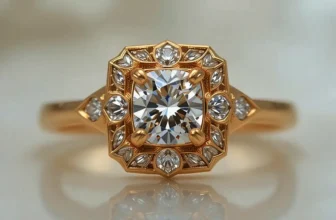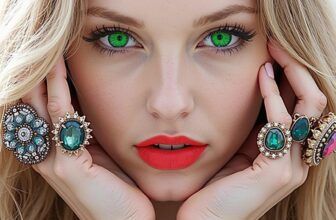10 Fascinating Facts About Art Deco Engagement Rings
Shopping Ads: Invest in Hidden Masterpiece: Rare Antique Oil Paintings For Sale. Limited Originals Available 💰😊 Are you looking for authentic hidden masterpiece? Explore old master antique oil paintings from the Renaissance and Baroque eras. From 16th-century portraits to 18th-century landscapes. Authenticity guaranteed, Old Master antique oil paintings for sale. Shop Now! 🎨 Renaissance And Baroque Art Old Master Portrait Paintings Landscape Antique PaintingsArt Deco engagement rings are more than just beautiful pieces of jewelry , they are timeless artifacts of an era defined by glamour, innovation, and bold design. Born in the 1920s and 1930s, during a time of great cultural and artistic transformation, Art Deco rings continue to captivate couples today with their geometric symmetry, dazzling gemstones, and rich symbolism. Whether you’re considering an Art Deco ring for your own engagement, or simply curious about this iconic style, understanding its history and unique features can add even greater appreciation for these remarkable treasures.
In today’s topic, we’ll dive into 10 fascinating facts about Art Deco engagement rings, exploring their origins, design characteristics, cultural significance, and why they remain one of the most sought-after vintage jewelry styles today.
1. Art Deco Was Born From a Global Movement of Style
The Art Deco movement first emerged in France in the early 20th century and gained international prominence after the Exposition Internationale des Arts Décoratifs et Industriels Modernes in Paris in 1925. Unlike previous artistic styles that emphasized softness or natural motifs, Art Deco embraced modernity, progress, and luxury.
The movement reflected the optimism of the Roaring Twenties, when jazz music, skyscrapers, automobiles, and cinema reshaped society. Jewelry design mirrored this cultural shift, producing rings that celebrated the machine age with streamlined forms, bold geometry, and dazzling symmetry.
2. Geometry and Symmetry Are the Hallmarks of Art Deco Rings
One of the most defining characteristics of Art Deco engagement rings is their geometric precision. Circles, squares, triangles, and hexagons often form the foundation of these designs. Symmetry was considered essential , every angle and detail was meticulously balanced to create visual harmony.
Unlike the flowing, organic curves of the preceding Art Nouveau period, Art Deco rings often resemble miniature architectural masterpieces. In fact, many jewelers drew direct inspiration from skyscrapers, bridges, and the clean lines of modern architecture.
3. Platinum Was the Metal of Choice
Although yellow and white gold were still popular, platinum became the signature metal of Art Deco engagement rings. Platinum’s strength allowed jewelers to craft delicate settings that securely held stones while maintaining intricate detail.
This was especially important as Art Deco designs frequently featured elaborate filigree work, fine milgrain edging, and bold gemstone arrangements. Platinum’s durability ensured that even the most complex designs could last for generations , one reason why authentic Art Deco rings are still so highly prized today.
4. Diamonds Were Often Baguette, Emerald-Cut, or Old European-Cut
The diamonds found in Art Deco engagement rings are often very different from the modern round brilliants that dominate today’s market. Popular diamond cuts of the 1920s and 1930s included:
Emerald cuts – elegant rectangular shapes that highlight clarity and symmetry.
Baguette cuts – long, slender stones often used as accents to frame a larger central gem.
Old European cuts – hand-cut diamonds with smaller tables and chunkier facets than modern brilliants.
These cuts emphasized clarity, sparkle, and geometry, aligning perfectly with the bold aesthetic of the Art Deco period.
5. Colored Gemstones Were Just as Popular as Diamonds
While diamonds are often the centerpiece of modern engagement rings, Art Deco jewelry frequently featured vivid colored gemstones. Sapphires, emeralds, rubies, and onyx were highly popular choices, often paired with diamonds to create dramatic contrast.
For example, a classic Art Deco design might feature a sapphire center stone framed by a halo of diamonds, or alternating rows of black onyx and white diamonds in a striking checkerboard pattern. These bold combinations symbolized the spirit of extravagance and individuality that defined the Jazz Age.
6. Many Designs Were Inspired by Exotic Cultures
The Art Deco era was a time of global exploration and fascination with other cultures. Jewelry designers drew inspiration from Egyptian, Asian, and African motifs after archaeological discoveries such as the 1922 opening of King Tutankhamun’s tomb.
This fascination manifested in rings featuring Egyptian-style lotus flowers, scarab motifs, and hieroglyphic-inspired designs. The influence of the Far East introduced lacquer-like enamel work, while African art contributed bold geometric patterns. These cultural references added richness and depth to Art Deco engagement rings, making them more than just adornments , they became miniature works of cultural art.
7. Milgrain and Filigree Were Signature Details
Art Deco jewelers often decorated engagement rings with milgrain (tiny beaded edging) and filigree (delicate openwork metal designs). These details gave rings a sense of refinement, making them appear almost lace-like despite their bold shapes.
This level of craftsmanship required immense skill and precision, which is why authentic Art Deco rings are still admired as masterpieces of jewelry design. When examining a vintage piece, the presence of fine milgrain and filigree work is often a reliable indicator of its authenticity.
8. Many Rings Were Custom-Crafted by Legendary Jewelers
Art Deco was the golden age for many of the world’s most famous jewelry houses. Designers like Cartier, Tiffany & Co., Van Cleef & Arpels, and Harry Winston all created breathtaking engagement rings in this style.
Cartier, for example, was celebrated for its use of onyx and diamonds in bold geometric settings. Van Cleef & Arpels frequently experimented with platinum filigree and colored gemstones. Owning an original Art Deco ring from one of these maisons is not only an investment in beauty but also in history and heritage.
9. Art Deco Engagement Rings Symbolize the Changing Role of Women
The 1920s marked a dramatic shift in women’s roles in society. Women gained the right to vote, entered the workforce in greater numbers, and embraced new freedoms in fashion and lifestyle. The flapper era celebrated independence, boldness, and individuality , and jewelry reflected these values.
Art Deco engagement rings, with their nontraditional designs, bold gemstone choices, and daring aesthetics, became a symbol of the modern woman. They represented freedom from Victorian restraint and embraced the vibrancy of a new age.
10. Art Deco Rings Remain Highly Coveted Today
Although nearly a century has passed since their creation, Art Deco engagement rings remain some of the most collectible and desirable vintage jewelry in the world. Their timeless designs, durable materials, and meticulous craftsmanship mean they are still worn and treasured by couples today.
Modern jewelers also continue to draw inspiration from the era, creating Art Deco-inspired rings that blend vintage charm with contemporary diamond-cutting technology. Whether you choose an authentic antique or a modern reproduction, an Art Deco engagement ring will always stand out as a unique and meaningful symbol of love.
Tips for Buying an Authentic Art Deco Engagement Ring
If you’re considering purchasing an Art Deco ring, here are a few tips to ensure you’re making a wise investment:
Check for authenticity: Genuine Art Deco rings date from the 1920s–1930s. Ask for certification or provenance when possible.
Examine the craftsmanship: Look for milgrain, filigree, and hand-cut gemstones that showcase artisanal detail.
Consider condition: Vintage rings may require resizing or minor repairs. Ensure the setting is secure before purchase.
Work with reputable jewelers: Seek sellers who specialize in antique or estate jewelry.
Explore alternatives: If an authentic piece is out of budget, high-quality Art Deco reproductions can offer the same aesthetic at a lower cost.
Why Choose an Art Deco Engagement Ring?
An Art Deco engagement ring is more than just jewelry , it’s a statement of individuality, history, and timeless elegance. Unlike mass-produced modern designs, every Art Deco ring tells a story. Its sharp lines, daring geometry, and bold color combinations reflect an era of transformation and creativity.
For couples today, choosing an Art Deco ring often symbolizes:
A love of vintage style and history.
An appreciation for craftsmanship and artistry.
A desire to stand apart from conventional choices.
A meaningful connection to the cultural energy of the Roaring Twenties.
From their geometric elegance to their cultural symbolism, Art Deco engagement rings are truly fascinating. They represent a golden age of design where jewelry was not only an accessory but also a reflection of modern life, progress, and individuality. Whether you’re drawn to their architectural symmetry, vibrant gemstones, or historical significance, these rings remain timeless treasures that continue to inspire awe and admiration.
If you’re in the market for an engagement ring, an Art Deco piece offers something no modern style can fully replicate , a tangible connection to an era defined by boldness, beauty, and innovation.




